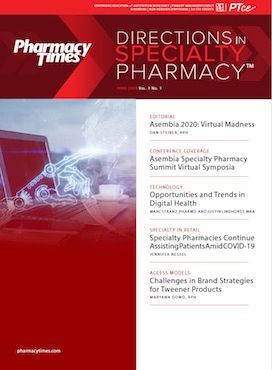
Publication
Article
Specialty Pharmacy Times
Wet Age-Related Macular Degeneration Treatment Updates and Specialty Pharmacy Considerations
By 2050, statisticians indicated that approximately 22 million people will be affected by macular degeneration or wet AMD.
THE PREVALENCE OF advanced age-related neovascular macular degeneration or wet AMD in the United States has skyrocketed over the past 20 years. At the turn-of-the-century, approximately 1.75 million Americans had this progressive disease. In 2020, almost 3 million Americans are affected. By 2050, statisticians indicated that approximately 22 million people will be affected. This was the impetus for a virtual symposium held in conjunction with the Asembia Specialty Pharmacy Summit.
Roger A. Goldberg, MD, MBA, started by presenting a clinical summary listing risk factors for wet AMD. Among the nonmodifiable risk factors are Caucasian race, age, and family history. Modifiable risk factors include smoking, obesity, and hypertension.
Augmenting his presentation with slides that showed wet AMD’s effects in the eye, Goldberg discussed the anti-VEGF agents. The introduction of this class has shifted the treatment course and options for management of this disease, which may lead to blindness. Three agents are currently FDA approved and 1 is used off-label—ranibizumab, aflibercept, brolucizumab, and bevacizumab—all target angiogenesis. He reviewed efficacy and safety data for each agent. He noted that adherence is essential for preserving vision.
In addition, Goldberg reviewed different strategies for dosing patients, including monthly, treat-andextend, and as needed (PRN). These approaches enable a customized approach for each patient, based on their disease and, to some extent, preferences.
Treatment costs related to wet AMD can be substantial, creating a challenge for managed care decision makers. Jeffrey D. Dunn, PharmD, MBA, indicated that in addition to loss of vision, patients who have wet AMD have poor quality of life; reduced ability to perform activities; increased risk of falls and injury; frequent comorbid anxiety and depression; and face challenges in relationships, finances, and independence. The impact of these problems was approximately $35.4 billion in 2004, so today’s figures are likely to be significantly higher. The Medicare program indicates that expenditures for patients with wet AMD are 5 times higher than those for patients with dry AMD, and ophthalmic injections take up 11% of its budget. The effect on Medicare’s budget has been staggering.
Dunn reviewed cost-effectiveness data associated with the biologics. He also said that many ophthalmologists use the treat-and-extend approach, but this makes it difficult to analyze therapy adherence in costs.
Among his proposed cost-containment solutions were ensuring that administrators look at the problem from a societal perspective, and also from a patient and ophthalmologist perspective. He also urged organizations to implement policies on “white bagging” processes, and consider starting their own specialty pharmacies or collaborating with organizations that do.
The specialty pharmacist’s unique roles may include compounding or repackaging capabilities for bevacizumab. They can also use medication therapy management to provide patient education, recommend lifestyle modifications, and track clinical outcomes measures. Pharmacists can offer ophthalmologists consultation regarding adverse effects, adverse drug reactions, nonadherence, and patient concerns. Dunn indicated that operational services such as supply chain management and care coordination are also imperative.

2 Commerce Drive
Cranbury, NJ 08512
All rights reserved.





